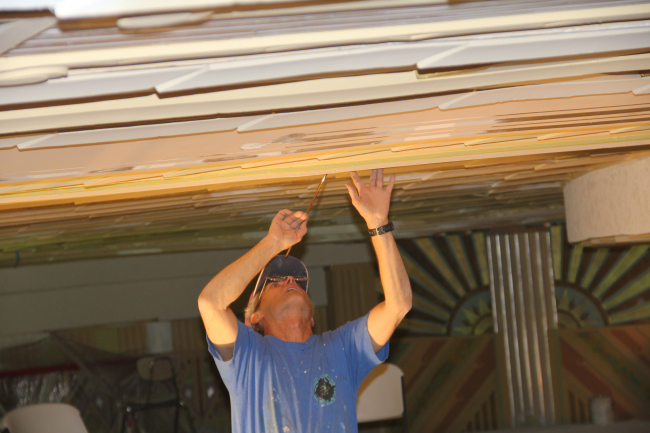What exactly is historic preservation? Here are some frequently asked questions.
You’ve likely come across references to “The Standards” at some point regarding historic preservation, but what are they exactly?
Where can I find out about the history of my building?
The Utah State Historic Preservation Office (SHPO) maintains files on thousands of historic buildings throughout the state. They are located in the Rio Grande Depot at 300 S. Rio Grande Street (450 West), Salt Lake City.
Local historic preservation commissions also keep files on building in your community. Contact your city or county to see if they have more information.
If your building has not been researched, the SHPO has instructions that lead you through the process. These instructions are also available on the SHPO website.
What is the National Register?
The National Register of Historic Places is the official federal list of properties that are significant in American history, architecture, archaeology, and engineering. Preservation Utah does not manage the National Register program. For more information, please contact the State Historic Preservation Office at (801) 533-3559 or visit their website.
Doesn’t listing my building on the National Register restrict what I can do to it?
In general, no. There is a common misperception that historical designation will keep you from making changes to your historic building. Restrictions are only imposed if (1) the building is listed on a local register (as opposed to the National Register) and (2) your city has a strict preservation ordinance, or (3) a preservation or conservation easement has been placed on your property. Most cities in Utah do not impose restrictions on historic building owners. Those that do usually limit their control to the exterior. Listing on the National Register imposes no restrictions whatsoever. Its purpose is to provide recognition and to encourage preservation. Restrictions on historic buildings can be imposed by local government, not by the state or federal government.
Are there grants or other funds available to help me restore my historic building?
Financial assistance is currently limited to low-interest loans and state and federal income tax credits. Matching grants from the State Historic Preservation Office have been awarded in the past to National Register-listed buildings, but are not currently available due to lack of funds. Small-dollar grants may be available through your local historic preservation committee as part of the Certified Local Government program.
There is a compiled list available from Preservation Utah here.
Must buildings be kept in pristine original condition in order to remain “historic?”
The most visible “character defining” features of a building should be preserved, but other elements - such as electrical systems, plumbing, kitchens, and bathrooms – must often be changed to accommodate new uses or improved standards of living. Even these changes can be done sympathetically so they complement the original character of the building.
What are some common do’s and don'ts when it comes to rehabilitating a building?
Roofs: Though some wood shingles are the most common historic roofing material, less expensive asphalt shingles are an acceptable replacement. If you choose to invest in wood shingles, use the more historically accurate, thinner sawn shingles rather than the heavy, split shake shingles.
Avoid clay tile, aluminum shingles, and other metal roofing materials that are not compatible with the architectural style or age of your building.
Avoid adding dormer windows to the front of your house; they are much less intrusive on the rear roof slope and even on the sides.
Exterior Walls: Never sandblast to clean or remove paint from brick walls; use appropriate chemical cleaners and low pressure (400 psi) wash instead. Sandblasting and high-pressure washes permanently damage the protective outer layer of the brick. Always clean small test patches first in order to determine the gentlest effective method.
Repoint deteriorated mortar joints with a softer, high-lime content mortar rather than modern mortar that is made up mostly of Portland cement. Modern mortar is stronger than the old brick, so as the building expands and contracts through the seasons the brick will be the first to crack. A basic historic mortar mix contains one part lime to three parts sand.
Avoid aluminum or vinyl siding, even on soffit and eaves. They often obscure architectural details, can trap moisture inside the wall, and are not as maintenance-free as their manufacturers would lead us to believe (dents and scratches can't be fixed, colors fade over time, etc.).
Exterior woodwork can be protected from the elements with a good paint job. This includes proper preparation of the surface and the right kind of paint (oil base paints hold up better than acrylic).
Windows: Avoid enlarging window openings or closing them off. Whenever possible, repair rather than replace historic window frames. Old frames can be made weather-tight and can often be adapted to accommodate double-pane glass. If windows must be replaced, select windows that match the original as closely as possible.
Additions: Keep new additions to the rear where they are less visible and make them narrower and shorter than the original building. If an addition on the side cannot be avoided, set it back as far as possible so the shape of the original house is still discernable. Try to match the original roof pitch, window shapes, eave width, etc.
Avoid attaching garages to historic houses whenever possible. A freestanding garage or one attached with an inconspicuous connector or breezeway is preferred.
What contractors know how to do the work correctly?
Preservation Utah compiles and updates a list of contractors with experience working on older buildings. See our Preservation Directory. Preservation Utah staff, as well as SHPO staff, is also willing to advise contractors and building owners on appropriate techniques and materials, drawing from our experience, associated building experts, and other articles and product information.

